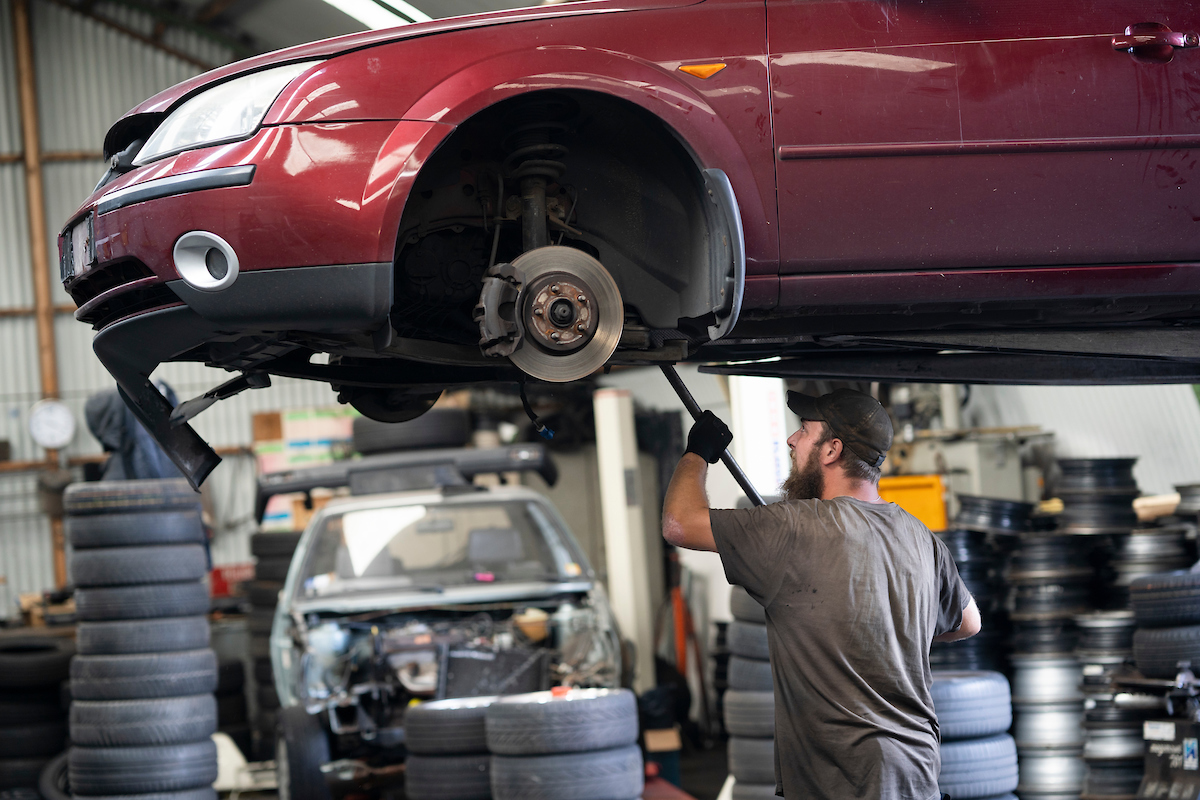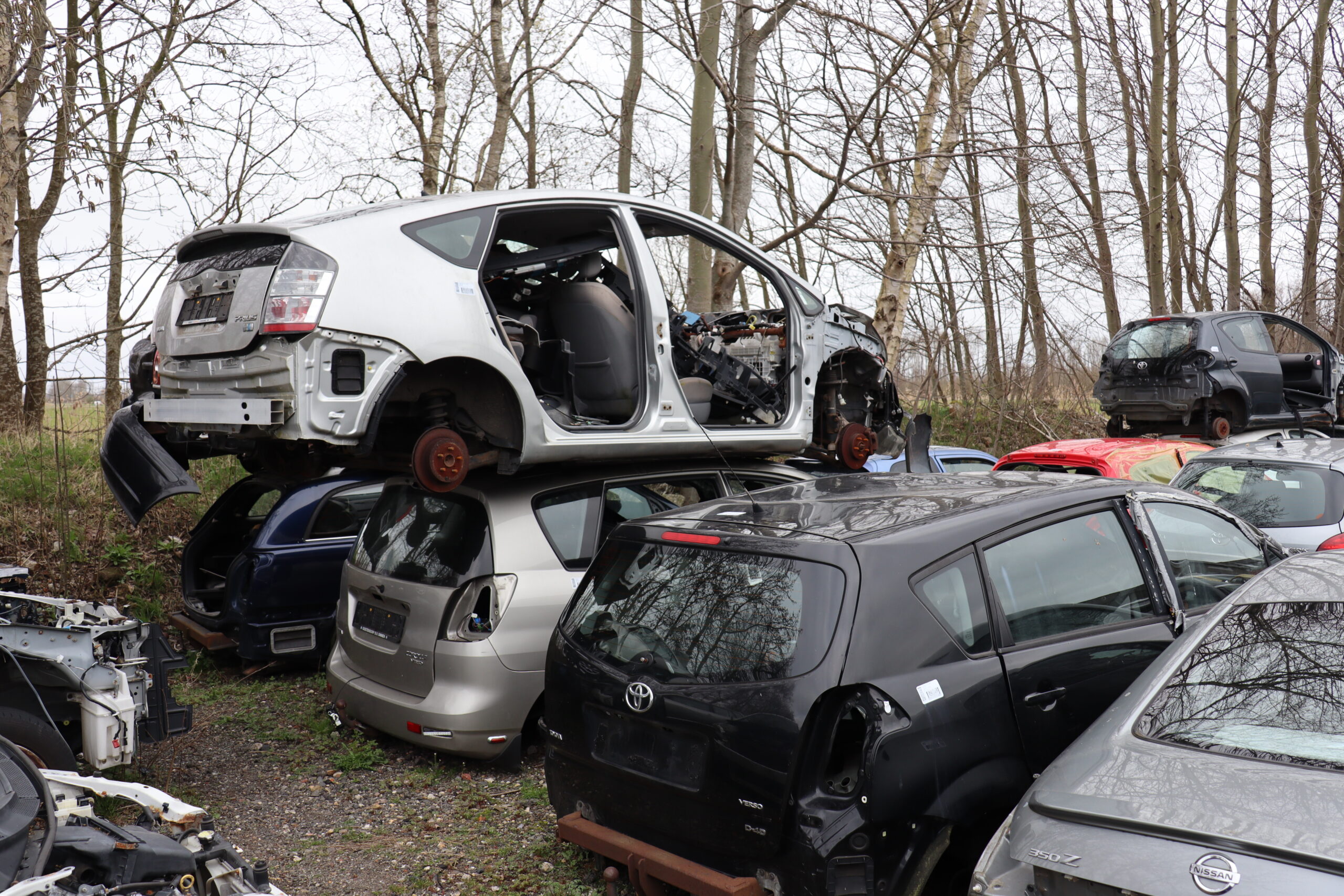Norway is the worldwide frontrunner in electric cars. At least 6 out of 10 new cars sold run on electricity. Now it also wants to lead the way in Europe when it comes to the recycling of electric cars. A brand new battery recycling facility in Frederikstad is shaping this ambition.
In three years, by 2025, every new car in Norway must be fully electric.
In 2025, in just three years, every new car in Norway has to be fully electric. That sounds like a tough challenge, but the Norwegians are already well on the way. In 2020, around half of cars driven out of the showroom were fully electric, a year later, 62.5 percent of newly sold models had only a power pack according to OFV, the Norwegian information council for road traffic. September 2021 was a top month if you include plug-in hybrids. At least 91.5 percent of new cars sold had a plug.
Government incentive
The preference for electric vehicles stems from government incentives to a large degree. Anyone who buys an electric car in Norway is exempt from the 25 percent purchase tax that applies to models with a fuel engine. “The bigger and more polluting the car, the more expensive it is”, the Norwegian Electric Vehicle Association (Norsk Elbilforening) explains the progressive tax system. The Norwegian government has incentivised emission-friendly driving since the early nineties, a strategy that is bearing fruit thirty years later. Electric vehicle drivers were exempt from road tax for years, did not have to pay tolls until 2017, and parked their vehicles completely free of charge until a few years ago.

In order to be able to recycle the ever-growing flow of battery packs, the Swedish battery manufacturer Northvolt, together with the Norwegian energy and aluminum producer Hydro, started the Hydrovolt joint venture in the summer of 2020.
World leader in battery recycling
As a frontrunner in electric driving, Norway is also the country that has to process the most ELVs (end-of-life-vehicles) with power packs. According to Autoretur, Norway has a total of around 2.8 million cars of which approximately 400,000 are electric. In other words, one in seven cars is fully electric. To recycle that continually growing stream of power packs, the Swedish battery manufacturer Northvolt and Norwegian energy and aluminium producer Hydro started the Hydrovolt joint venture in 2020. This organisation is currently the largest battery recycling facility in Europe. They can recycle over 8,000 tons of battery modules a year in Norwegian Fredrikstad. That is the equivalent of 23,000 EV power packs a year. And that is just the start, because European expansion is on the cards after Norway. Hydrovolt CEO Fredrik Andresen: “At the start of 2021, we were the first country in the world where over half of new cars sold were fully electric. We should therefore also aim to become the world leader in the recycling of used car batteries when the batteries of electric cars reach the end of their life cycle.”

Batteriretur annually collects more than 15,000 tons of lead-acid batteries for recycling.
The lithium, manganese, nickel and cobalt from the battery pack finds its way into new batteries from the battery manufacturer
Batteriretur
Northvolt and Hydro cannot do it alone. Norwegian Batteriretur is a direct neighbour of Hydrovolt in Fredrikstad. This company both collects and sorts high-voltage batteries from electric cars, but is also a dismantler and an important centre of expertise. The sorting centre is located in Fredrikstad and the research department is in Sandefjord. It is also the place where Batteriretur discharges and dismantles the incoming batteries. Thanks to high quality analysis methods, Sandefjord knows the exact condition of incoming batteries. Batteriretur has a third site in Flateby. The repair and test cente is based there.
Joining forces
Operations run like a well-oiled machine in Fredrikstad. Batteriretur – which is also led by Hydrovolt CEO Fredrik Andresen – supplies the batteries. Hydro recycles and reuses the aluminium from the used batteries, while Northvolt is responsible for the ‘black mass’. In short, the lithium, manganese, nickel and cobalt from the power pack finds its way into the Swedish battery manufacturer’s new batteries. Northvolt does not use everything itself; it also sells a share to third parties.

Pilot project
The seed for world leadership in the recycling of high-voltage batteries was sown a decade ago. In 2012, the Norwegians commenced a pilot project involving the safe recycling of power packs from electric vehicles on behalf of the European motor vehicle industry. “We gained a great deal of experience in the field of dismantling, separating, fire and energy safety”, Fredrik Andresen said at the recent annual IARC international car recycling conference. In the start-up phase, a great deal of work went into the development of manuals and knowledge was gained in the smart organisation of logistics surrounding the processing of discarded power packs.
Great strides
Using the knowledge gained from the pilot project, Batteriretur started processing high-voltage batteries in 2014. With the explicit support of the Norwegian association of motor vehicle importers, that is, the co-owner and initiatior of Batteriretur Høyenergi. The goal of Batteriretur Høyenergy? “To find safe and cost-efficient solutions for high-voltage batteries in terms of Research and Development, design, dismantling, repair and recycling”, according to Andresen. Eight years after the start, the Norwegians have made great strides in every respect. Andresen made no secret of his pride during his IARC presentation: “We are currently the world leader and have slashed the costs of recycling by two thirds. We have amassed knowledge and skills while having access to unique raw materials.” And according to Andresen – development is progressing smoothly – to great international interest. “Our new project concerns robotic dismantling.”

Currently, Northvolt Ett in Skellefteå employs more than 500 people from 56 different nationalities.
‘Hydrovolt contributes to a circular European battery industry. Our goal is to shape the battery recycling market in close collaboration with car manufacturers’
Closing the loop
Andresen thinks Hydrovolt can close the loop for high-voltage batteries in Europe. “Hydrovolt is contributing to a circular European battery industry. Our goal is to shape the market for the recycling of batteries in close collaboration with car manufacturers.” According to Hyrdovolt, four pillars are import and they can offer all of them themselves. As a Norwegian company, they possess a great deal of knowledge of renewable energy, while electric driving has reached maturity in Norway. As a result, a great deal of expertise and advanced technology in the field of the recycling of high-voltage batteries is available. In addition, a high degree of traceability and transparency is essential for a circular European battery industry. But the real secret? “Close collaboration is essential for the creation and development of a circular system for high-voltage batteries”, asserts Andresen.
Over forty years of motor vehicle recycling
Where countries like Denmark, Sweden and the Netherlands introduced a collection system for End-Of-Life (ELV) vehicles in the nineties, Norway was way ahead of them. It has been collecting end-of-life vehicles for recycling since 1978. Processing centres were paid by the Norwegian government until 2006, after which they switched to a system called ‘Autoretur’. This system works on the basis of manufacturer responsibility, with motor vehicle importers taking the lead (under the BIL umbrella). A national collection network with 140 ELV collection points and a dozen shredder companies forms the basis of the Autoretur system. Since the start, almost 1.8 million ELVs have been processed in fifteen years, with 96.6 percent of the weight of the vehicle put to good use. This puts Norway in the top league of the European motor vehicle recycling industry.
Batteriretur first opened its doors in 1993. As a non-profit organisation, it collects all types of batteries across the whole of Norway via controlled downstreams. Safety is paramount. In 2014, Batteriretur founded subsidiary Batteriretur Høyenergi AS, specialising in high-voltage batteries. It collects and dismantles more EV batteries than any other company in Europe.
The battery packs are dismantled manually and by robot, whereby Hydrovolt recovers the steel, aluminum, copper and plastic for reuse
Hydrovolt collects batteries, including the packaging, via a network of partners. Hydrovolt drains the batteries of their charge, after which it stores the residual energy smartly for reuse in its own factory process. In addition, the facility has 300 solar panels on the roof, as a result of which it operates in an exceptionally circular way. The battery packs are manually and robotically dismantled, with Hydrovolt reclaiming the steel, aluminium, copper and plastic for reuse. The battery cells and modules are pulverised and the electrolytes collected for future applications. The pulverised material is sorted according to density, dimensions and magnetism. The copper and aluminium follow a recycling route, while the other material– the ‘black mass’ – undergoes a hydrometallurgic process. That means sulfuric acid removes impurities so the nickel, manganese, cobalt and lithium remain. Which can then be reused straight away for the production of new batteries.

Circular hotspots
While Europe, and thus the Netherlands too, still have much to learn from the circular Norwegian approach to end-of-life high-voltage batteries, the reverse certainly applies too. According to a report by Amsterdam company Circle Economy, the economy of the Netherlands is 24.5 percent circulair while that of Norway is only 2.4 percent. Holland Circular Hotspot and Nordic Circular Hotspot recently signed an agreement to join forces. By sharing innovations, knowledge and resources, the economies of the Scandinavian countries and the Netherlands should become far more circular.






